
The Hellboy Memorial Awards: ComicsAlliance’s Best Comics of 2012, Part 4

Did you miss part three? Click here to catch up.
About the Hellboy Memorial Awards
Created by Mike Mignola and better known as Hellboy, the Beast of the Apocalypse Anung Un Rama was summoned to Earth as a child in 1944 by the Nazis and their mystic-for-hire, Grigori Yefimovich Rasputin (yeah, same guy -- long story). Fortunately for Earth, li'l Hellboy was intercepted and raised by Professor Trevor Bruttenholm, the British occult expert who would go on to found the United States' Bureau for Paranormal Research and Defense. Equipped with a massive and indestructible stone right hand whose origins are so complicated that to explain it would necessitate expanding this "best of" list to fifteen parts, Hellboy led the B.P.R.D. on field missions for several decades before quitting in disgust over his superiors' discriminatory practices concerning a fellow agent (whom, in fairness, had previously absorbed the life force of one of his colleagues). Concurrently, Hellboy felt a compulsion to wander the Earth in the hope of reconciling his destiny as the harbinger of doom with his upbringing as a pretty chill bro.
On his journey Hellboy became imprisoned at the bottom of the ocean for some years before traveling to England, where he discovered he was the last scion of the legendary King Arthur (on his mother's side). Engulfed in a war with witches, fairies and other assorted supernatural jerks for the fate of all mankind, Hellboy perished while defeating Nimue (the legendary Lady of the Lake), who had become a vessel for the dreaded Ogru Jahad, the ancient dragon who created all life on Earth and who Hellboy was born to unleash upon the world. Never known for his eloquence, Hellboy uttered the words "Son of a..." just before he fell into a comic that's going to be on this list next year.
We honor Hellboy's sacrifice with a celebration of more of the great comics we at ComicsAlliance enjoyed this past year.
MOST MANIFESTLY BEAUTIFUL SUPERHERO COMIC
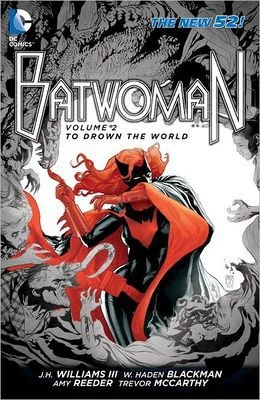 Batwoman
Batwoman
Written by JH Williams III and W. Haden Blackman
Artwork by JH Williams III, Amy Reeder and Richard Friend, Trevor McCarthy and Rob Hunter, and Dave Stewart
Published by DC Comics
Available: Comics shops (print) / DC Entertainment (digital)
The ongoing adventures of DC's first openly gay superheroine to star in her own title, Batwoman fuses JH Williams' graphic innovations from Promethea, where he seamlessly synthesized sequential art, illustration and design, with the noir approach he devised for Desolation Jones. Laid out almost exclusively in two-page spreads, Batwoman's typically nonlinear narrative is inexorably linked to Williams' idiosyncrasies as a storyteller, which often dictate that two consecutive panels might be constructed with different shapes and rendered in distinctly different styles depending on who's in them and where or when they take place. Even characters within panels are sometimes depicted in contrasting ways, such as this year's team-up with Wonder Woman, who was illustrated in a kind of ligne claire style even as she interacted directly with Batwoman, who Williams always presents in a tightly rendered and ink-washed, almost painterly fashion. In every case, the multiple styles, disparate as they can be, are somehow complimentary, creating a singularly perfect image that's beautiful, dark, violent, sometimes sexual, and everything else we love about comics in Gotham City.
While many popular comics artists have demonstrated that you can make a pretty picture by drawing circles and squares all over the place, Williams' use of design elements not only enhances the tone of the story he's telling, but in fact is actually helps tell that story. Williams plays with icons, emblems and other visceral images like lightning bolts, floating bubbles and musical notes to various dramatic ends. Sometimes he does so in ways as obvious but effective as framing a tense but exciting encounter between the Amazon princess and Gotham's dark heroine within their respective sigils, and as subtle and even hypnotic as... well, that would probably be spoiling something.
Batwoman's monthly schedule necessitates that Williams alternate storylines with other artists, and in a much appreciated break from the stylistically chaotic tradition of most modern superhero comics, there's been some care in selecting contributors whose talents for lavish pages compliment his own. Amy Reeder's manga-influenced storytelling style worked very well for the book, and Trevor McCarthy also has a gift for highly kinetic, elaborately staged action. Both artists' work on the series was informed and, from what I've heard, heavily art directed by Williams himself.
In one of the more bittersweet news items of the year, Williams is leaving Batwoman to work with Neil Gaiman on a new Sandman story for Vertigo in the new year. One is forced to doubt the future of this most aesthetically pleasing superhero book, but only because Williams raised the bar so incredibly high with Batwoman in 2012.
MOST ENJOYABLE FILTH FLARN FILTH
 The Monkey King Vol. 2
The Monkey King Vol. 2
By Katsuya Terada
Published by Dark Horse Comics
Available: Dark Horse/TFAW store / Comics shops
Let's be honest with each other: sometimes you need a little raunch in your life; a little bit of that exploitation magic. It's okay! Most of us are into that stuff, you know? It's cool. There's something incredibly entertaining about gratuitous nudity and violence. Maybe it's the taboo, maybe it's the overt titillation, or maybe it's just the fact that you know you're looking at something naughty. Whatever the reason, sometimes trash hits the spot.
Katsuya Terada's Monkey King is remarkably trashy. It probably isn't the trashiest adaptation of the legend of the Monkey King -- the distant source material for Akira Toriyama's Dragon Ball and countless other stories -- but it definitely goes for the gold. Instead of exploring the tale of Goku's journey to the west by examining enlightenment and how to become a better person, Terada zeroes in on the good stuff: weird naked girl-monsters, awful bug creatures, and the tremendous gouts of blood that come after you take a monster apart piece by piece.
In 2012 The Monkey King volume 2 finally arrived in the United States after a seven-year wait, and it is the most amazingly sleazy thing. It looks something like Richard Corben doing grimy gutter-fantasy with just a dash of Boris Vallejo. Some of the pages look like trashy fantasy novel covers, and others like the dirtiest fairy tale ever. Terada fills the series with BDSM tropes, exploitation cinema staples, and positively filthy -- but genuinely funny -- jokes. You can't defend it as being anything progressive, but man, is one entertaining comic book.
BEST UNAUTHORIZED SEQUEL TO A 200-YEAR-OLD LITERARY CLASSIC
 Frankenstein Alive, Alive!
Frankenstein Alive, Alive!
Written by Steve Niles
Artwork by Bernie Wrightson
Published by IDW Publishing
Available: Comics shops (print) / ComiXology (digital)
In 2012 Bernie Wrightson returned to the character that he made his own in comics, Frankenstein, the subject of the artist's revered 1983 adaptation of the Mary Shelley classic. This sequel is everything you could have hoped for. Truly, the uncommonly beautiful first issue doesn't even prepare you for the second -- which by comparison makes the first seem like Wrightson was just going through some warm up sketches. Of particular note is a two-page spread of a gothic library where every book and thing in this impossibly cluttered room has been painstakingly drawn around the monster, and it is but one of the truly feats of artistry found in this miniseries.
Beyond his unparalleled draftsmanship, Wrightson has always been a master at depicting the sort of existential terror at the heart of Frankenstein -- that here is a monster more afraid of us than we are of him. Here is a monster who is full of self-loathing and void, and whose initial urge in life is to seek revenge against the creator responsible for bringing him into terrible being. Wrightson has all of that down, and you can read it just in the weight with which the creature moves through the panels and how he haunts every setting he's put in. Your stomach twists every time he is rejected as a monstrosity. This way, Frankenstein Alive, Alive is like David Lynch's Elephant Man; it has a similarly brutal feel in terms of how we as the audience perceive the tortured main character.
For his part, Niles knows just when to turn the knife on us, and he also knows when to hang back in the shadows and let Wrightson's work be the show. The writer knows what we're seeing in any given is Bernie Wrightson on top of his game, and that's enough to lay waste to any challengers in any year. 2012 is no exception.
BEST GRAPHIC NOVEL ABOUT THE MOST CONTROVERSIAL THING IN THE WORLD
 Jerusalem: Chronicles from the Holy City
Jerusalem: Chronicles from the Holy City
By Guy Delisle
Published by Drawn and Quarterly
Available: D+Q store / Comics shops
Guy Delisle has become perhaps the ultimate comics foreign correspondent, producing comics work after comics work that synthesizes coverage of the politics and people of some of the hardest and least fun places in the world like North Korea and Burma/Myanmar with his travelogue-esque observations of the things he sees and the people he meets. Delisle came to be in the position by marrying a woman who works with France's Medecins San Frontieres (You probably know it as "Doctors Without Borders"), and he secured his reputation by being a world-class cartoonist.
Jerusalem differed dramatically from some of Delisle's past work because of how much the settings differ. Jerusalem is a city, not a country, but it's a city full of different cultures, religions and elements of nations. Jerusalem is just a city, but, in a way, it's a city bigger than any country in the world. It's also a place that isn't as foreign or alien to western readers -- those in Europe or North America, specifically -- as those he's visited before, and Jerusalem is a place where many of the people he encountered shared elements of his own culture and background.
The book itself differs significantly, as the many murky moral issues Delisle finds himself navigating for a whole year (and finds everyone he meets navigating for their entire lifetimes) are a lot less black-and-white than those witnessed in someplace like, say, Burma, where things could be easily broken up into two sides -- the government and the people -- and where the wrong and right side of most issues easily sussed out. In Jerusalem, as in Jerusalem, not so much.
Delisle's not a journalist and he's not exactly unbiased toward the morass of issues he encounters, nor does he shy away from sharing his own opinions explicitly. But his book is descriptive, not prescriptive. His comic focuses on the culture and the lives of the people in the city more so than the political and religious issues that inform that culture and those lives (Delisle, for what it's worth, is an atheist, so in one very important way, the various sects of Jews, Muslims and Christians that make their homes in Jerusalem and the surrounding environs have a lot more in common with one another than they have with Delisle). His journalism, if we want to call it that, is, like Delisle's humor, observational in nature, which makes Jerusalem: Chronicles from the Holy City -- an honest record of daily life in what is certainly the most controversial city in the world -- a graphic novel of great worth.
MOST GENUINELY TERRIFYING OH MY GOD I'M SERIOUSLY AFRAID TO GO TO SLEEP I'M NOT EVEN KIDDING HORROR COMIC
 Ragemoor
Ragemoor
Written by Jan Strnad
Artwork by Richard Corben
Published by Dark Horse Comics
Available: Comics shops (print) / Dark Horse (digital)
Richard Corben is one of those guys who, when he dies, will be a trending topic on Twitter. People will talk about how great he was and there will be all kinds of lovely things said about him. But here's the thing: Richard Corben is alive right now... and he is absolutely killing it. So let's celebrate him now, because in 2012 he and co-creator Jan Strnad put out one of the true monoliths in American horror comics with Ragemoor, the story of a living fortress and its infernal caretakers who must protect it from an invading horde of nightmarish creatures.
A lot of people in comics think they're making horror comics with their silly gore porn zombie ripoffs, but what they're really doing are adventure comics in goth makeup. Richard Corben is doing horror comics. Ragemoor is the scaly, gritty, grimy, body horror, claustrophobic return to brilliance that the genre has been crying out for. Stripped down to just pen and ink, Corben demonstrates why his line is one of the dominant horror lines of all time. There are pages in this book that you would swear come alive in the panel.
In some of Corben's previous work, especially the best stuff from the '70s, you could sort of criticize it by saying, "Well, but the story isn't that strong..." With Ragemoor, that is definitely not the case. Strnad collaborates beautifully with Corben, knowing both how to stay out of his way and still put him through his paces as a graphic storyteller. There are sections of this book that are as narratively strong as they are artistically mighty -- a huge huge compliment to Strnad's writing, given Corben's kill.
Ragemoor is horror reduced to its nastiest essentials. No filler. Not a wasted panel. In a year that was relatively weak for the horror comics genre (Mike Mignola's work exempt, of course), this book is a return to comic book horror glory by one of the masters who defined it. Truly one of the year's best.
BEST VERY IMPORTANT GRAPHIC NOVEL
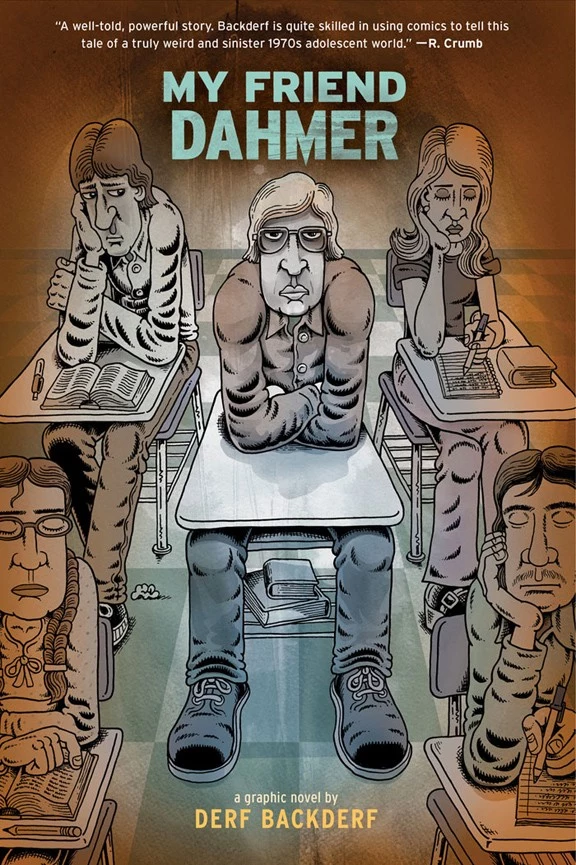 My Friend Dahmer
My Friend Dahmer
By Derf Backderf
Published by Abrams ComicArts
Available: Abrams store (print + digital) / Comics shops (print)
As with every calendar year were are a lot of really good graphic novels and a lot of pretty great graphic novels to choose from when it came time to pick out a handful to assign as being among the best of 2012. There are always far fewer important graphic novels, though; books that cover a difficult but vital subject matter delicately but boldly, fairly and yet with a point-of-view, books that do all of that and also happen to be really great on an artistic level.
Backderf's My Friend Dahmer, his 20-years-in-the-making memoir of attending the same high school as the weird, troubled kid who would eventually grow up to be one of America's worst serial killers, is just such a comic.
It's not always easy reading and may disturb readers on several levels -- perhaps no level more disturbing than the realization that whatever else Dahmer might have been, he was also a human being, and maybe not all that different from kids you went to high school with or, perhaps, in some ways, not so different from you yourself at that point in your life. Thankfully there aren't a whole lot of people like Jeffrey Dahmer, but there are and always will be people who kill, who murder, who become human monsters, and while BackDerf's's work might not help readers understand why that is or how some people end up becoming that kind of monster, this comic book does provide a context rarely available. One never before presented with the visceral immediacy of comics, and rarely from a long-time cartoonist who broke through to a whole new level of mastery of his form with this signature work.
BEST BALLS-OUT CRAZY SUPERHERO BATMAN COMIC
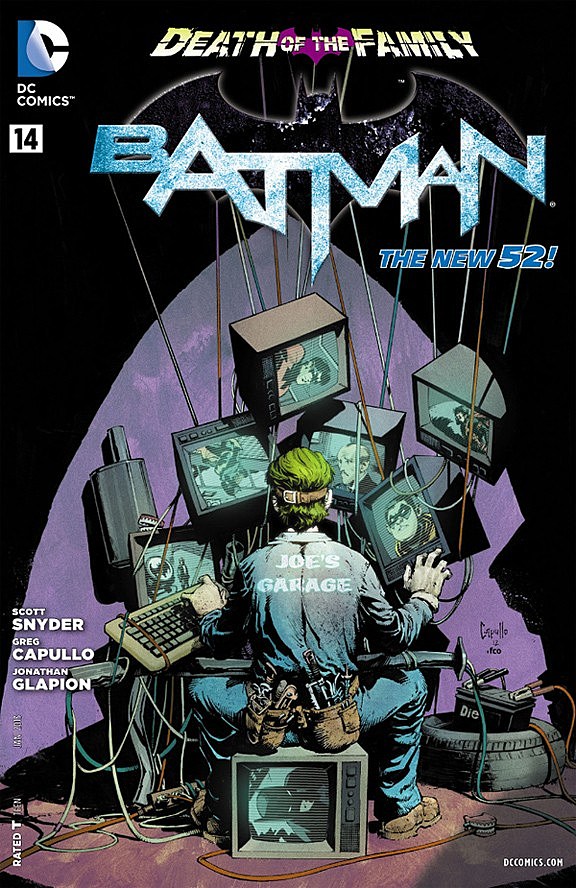 Batman
Batman
Written by Scott Snyder
Artwork by Greg Capullo and Jonathan Glapion
Published by DC Comics
Available: Comics shops (print) / DC Entertainment (digital)
Some people only like Batman when he's a grim, pulp-inspired loner, working on more realistic crimes without gadgets or other comic book weirdness involved. And you know what? That's fine. There are a ton of great stories out there about that version of Batman. But the thing is, Batman is a superhero who lives in a world where crazy superhero stuff happens all the time -- he's a guy who keeps a robot dinosaur in his billion-dollar anti-crime basement, after all. That's the Batman that Scott Snyder and Greg Capullo have been doing comics about for the past year, and they have been amazing.
Snyder and Capullo's run on Batman has essentially been built around two big events, "The Court of Owls" and "Death of the Family," and they're both rooted in classic superhero comics tropes. Evil twins, secret societies, vast conspiracies, poisoned reservoirs, secret identities and massive deathtraps -- these are the things that Batman has had to deal with in that comic, and it just keeps getting bigger and bigger with each issue. It's one of the few comics that's been able to take advantage of the malleability of the DC Universe in the aftermath of the New 52 relaunch by giving us a book where anything seems like it could happen. After 70 years, it feels like there are things we don't know about these characters and how they work. And it's an approach that's paid off. Snyder's work on "Death of the Family" in particular and the way he's constructed a twisted love letter that finds the Joker wanting to rid Batman of his weaknesses (read: sidekicks) to make him a better king for his kingdom is smart, solid work. If it manages to end as strong as it started, "Death of the Family" is going to go down as one of the most definitive portrayals of the Joker. There's no reason to believe it won't, either: Each issue brings something new, different and even more dangerous to the story, twisting classic ideas into surprises in each chapter.
It's also worth noting that Snyder and Capullo were the most consistently great team of the New 52; they went a full year without a fill-in and delivered quality comics every time. They've set the superhero action standard that the rest of DC should try to live up to.
BEST COMICS ABOUT SQUADS ON SUICIDE MISSIONS
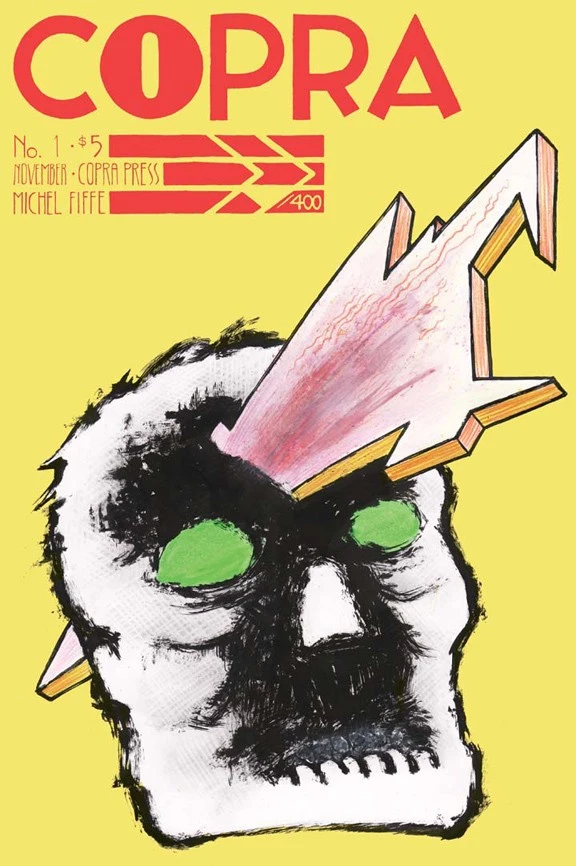
 Deathzone and COPRA
Deathzone and COPRA
By Michel Fiffe
Self-published
Available: Etsy (Deathzone in print) and Etsy (COPRA in print + subscription)
I think it's safe to say that Michel Fiffe's Suicide Squad fan comic, Deathzone, is the best issue of Suicide Squad in the last, oh, 20 years, with a passion and vigor that shames its corporate contemporaries. There's a real sense of affection for the concept and the characters originally assembled by Tom Ostrander, Kim Yale and Luke McDonnell for DC Comics, even when Fiffe's putting them through some really bizarre, dangerous situations, all wrapped up in some seriously lush art that owes more than a little to the best years of the Frank Miller/Klaus Janson comics machine.
Fiffe followed-up his fan comic about a bunch of disposable roughneck antiheroes fighting weird, existential threats with, well, another bunch of disposable roughneck antiheroes fighting weird, existential threats. His latest self-published monthly comic, COPRA, is a melange of everything you'd want from an action comic: tough heroes, crazy villains, shadowy conspiracies and a level of craft that is staggering for a cartoonist as relatively young as Fiffe is. In each monthly issue there have been a handful of innovative panels that manage to impress me with how well they use the language of comics to communicate the story. In a marketplace where a certain subset of comics exist purely as paper pitches for other media, it's refreshing to see a comic that's meant to be a comic, and one that is so fluent in that language, as well.
COPRA is a supreme labor of love, with Fiffe creating, writing, drawing, inking, hand-lettering, hand-coloring and distributing the whole thing every month. Even the production is meticulous, with a nice toothy paper stock that leaves you feeling like you've got your money's worth with each issue, as opposed to other publishers who offer up 19 pages of story interrupted by crappy house ads and printed on what feels like leftover paper from that Parade magazine that comes in the Sunday newspaper. An issue of COPRA feels substantial, both in terms of content and form.
MOST WEIRDLY EFFECTIVE MIX OF RELEVANT POLITICS AND COMIC BOOK ACTION
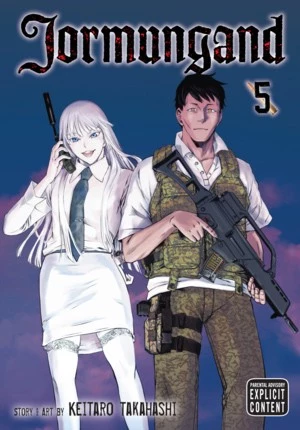 Jormungand
Jormungand
By Keitaro Takahashi
Published by Viz Media
Available: Viz store (print and digital) / Comics shops (print)
The last place I would expect to see a discussion of gun control and the effect guns have on our lives is in an action comic, but Keitaro Takahashi's Jormungand is as well-researched and thoughtful as it is stylish and savage. Jormungand features Koko Hekmatyar as a focal point. She's a globe-trotting arms dealer with a security squad that keeps her safe. The newest member of the squad is Jonah, a child soldier from a thinly veiled version of Afghanistan. The rest of the squad are all vets who trust Koko. Koko herself isn't the boring, bloodthirsty arms dealer you'd expect. She's young, talkative, goofy, and silly, up until the point where she decides you need to go and has one of her people take out all of your people.
That's not necessarily a great structure for a fun action tale, but Takahashi somehow pulls it off. There's a certain level of gun otaku flavor in Jormungand. There are several scenes where one character talks about how efficient or impressive a weapon is while characters either concur or listen in awe.
But Takahashi doesn't just stop at gun fetishism. He pulls in real life stats and research whenever he's discussing weapons in Jormungand. It's not just about the guns. It's about the culture and business of guns. It's about what type of person possesses the most guns, the failure of our leaders to indulge in much-needed charity instead of indulging in asinine arm races, and more.
Jormungand looks like a good action comic where people get shot, stabbed, and smoke cigarettes. I wasn't expecting it to come with a history lesson, but that definitely makes it a better comic. There's a lot to take in, and Takahashi makes sure that the comic stays fun, even when he's bringing in some of the most depressing aspects of real life. The child soldier aspect is off-putting, but it's handled in such an interesting way that I just have to keep up with Jormungand, despite my (minor) misgivings.
BEST FRANKENSTEIN COMIC - NON-WRIGHTSON GROUP
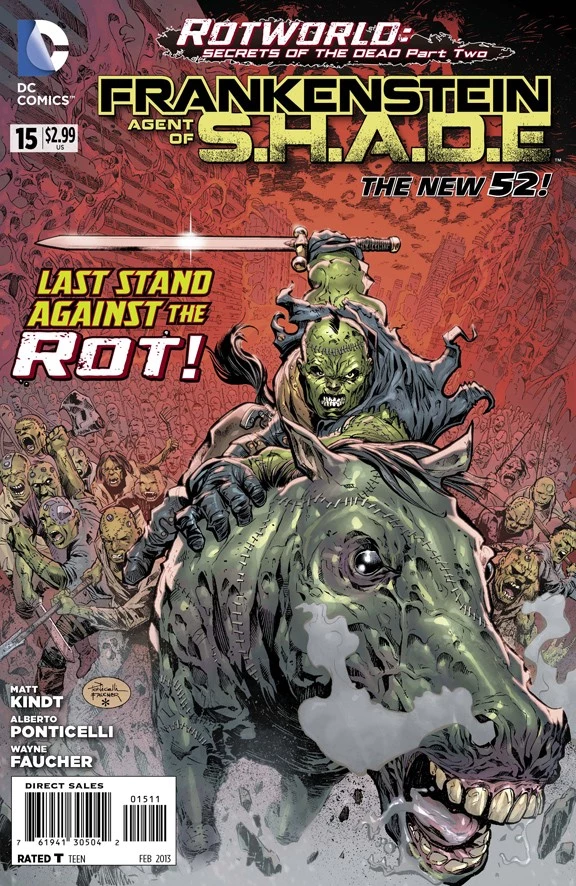 Frankenstein, Agent of S.H.A.D.E.
Frankenstein, Agent of S.H.A.D.E.
Written by Jeff Lemire, Matt Kindt
Artwork by Alberto Ponticelli and Wayne Faucher
Published by DC Comics
Available: Comics shops (print) / DC Entertainment (digital)
Remember The Monster Squad? That amazing movie from the late '80s with John Gries as the Wolfman and that dickish older brother from The Wonder Years playing another dickish character? OK, take The Monster Squad, make the monsters the heroes, give them a job with a superhero version of the B.P.R.D. crossed with S.H.I.E.L.D, make Frankenstein's monster the leader and make him quote the Dark Romantics and make him awesome and make heads explode and make a small but dedicated readership squeal with joy and make no plans past issue #16, because it's your last.
When Lemire departed the Frankenstein book halfway through the year, he left behind a great book for somebody to screw up. It had an original voice and a scope that seemed impossible for anybody else to capture. Unless, apparently, that anybody else was Matt Kindt. The already massive scale got bigger, the whir of ideas came even faster, and the characters, already interesting and complex, seemed to grow even more relatable. With sprawling, scratchy, angry artwork from Alberto Ponticelli and Wayne Faucher, the adventures of Frankenstein and the Creature Commandos were like colossal Kirby sci-fi epics starring your childhood fears. Soul-grinders! Leviathans! Monster planets! Self-hate!
Sadly, back in October it was announced that Frankenstein, Agent of S.H.A.D.E. would be pushed aside to make room for something else, while Frankenstein himself (the monster, that is) would join the cast of Justice League Dark. Which is actually a great home for the character; it's a high-quality book in a similar vein, with Frankenstein's original writer Jeff Lemire at the helm. Somehow, that just doesn't make the hurt go away.
Go forth, you hideous progeny! And prosper!
BEST ARMY BROS VS. GIANT MONSTERS COMIC
 Godzilla: The Half-Century War
Godzilla: The Half-Century War
By James Stokoe
Published by IDW Publishing
Available: Comics shops (print) / ComiXology (digital)
With Guillermo del Toro's big-budget mecha-vs-kaiju Pacific Rim movie coming out in the summer of 2013, I'm sure we will continue to see an increased interest in giant monsters and the men and women tasked with combatting them. But out of all the comic book versions of that scenario, the best available right now is James Stokoe's Godzilla: The Half-Century War, a comic that sets the acclaimed Orc Stain creator loose in the cinematic world of Toho, Ltd.
As I write this, only the first three issues of the five-issue miniseries have been released, but the shape of the story is clear: each issue depicts a decade-specific battle between the AMF (the Anti-Megalosaurus Force) and Godzilla (and friends), and as the years go on, things get increasingly more insane. The first issue opens in 1954, and while it's James Stokoe doing his hyper-kinetic, excitingly-detailed depictions of men and monsters and machines, it's the tamest issue of the bunch. It's mostly an issue about establishing the unusual and unexpected nature of the giant monster threat, and giving Godzilla a chance to unleash. By the time of issue #3, we've jumped ahead to 1975, the ragtag AMF-ers pilot a barely-souped-up Volkswagen van (with a trippy Mothra painted on the side) through the streets of Ghana, dodging giant spiders and lobster creatures and atomic breath blasts.
While a publisher like Marvel or DC might allow a creator like Stokoe to play around with their characters in a jokey anthology project like Strange Tales or Bizarro World, IDW and Toho have given the cartoonist a chance to have some fun with the Godzillaverse characters in a miniseries that actually has a substantial plot and character development. This isn't a pushed-to-the-side, oh-look-how-funny-it-is-for-this-indie-artist-to-draw-our-characters kind of comic. No. This is a great giant monster comic -– the best I've ever read -– that is full of humor and playfulness and absolutely stunning imagery.
This is what you get when you give James Stokoe the steering wheel and he takes off, with the rest of the comics industry saying, "where the heck is he going? Can we even try to keep up?" Maybe not, but we can all at least watch where he's headed and enjoy every moment.
BEST COMIC BOOK ANTHOLOGY NOT ENTIRELY DEDICATED TO THE ROCKETEER
 Dark Horse Presents
Dark Horse Presents
Edited by Mike Richardson and Jim Gibbons
Published by Dark Horse Comics
Available: Comics shops (print) / Dark Horse Digital
The comic book art I tend to enjoy most is that which aspires to create a world entirely different from the one in which I sit reading, and there are few creators who can do so as thoroughly as the writers, artists and other talents whose now-famous works made their earliest appearances in the pages of the original Dark Horse Presents. These sometimes quirky, often dark, undiluted excursions into the minds of uniquely talented creators is the true joy of reading anthologies, which for me have always been the kind of comics you read last from the pile; the ones that seem a little daunting compared to the comfort and familiarity of the latest issues from whatever ongoing series or creator you've been following for years; the ones that seem like it's only proper to read them in the middle of the night, or when you're home sick from school, whatever scenario that allows you to get lost in some storytellers' peculiar dreams.
Relaunched in 2011 in a new format -- 80 pages, no ads, perfect-bound -- the new Eisner-winning DHP has demonstrated that quality with every issue, hosting an eclectic mix of veteran creators and new talent alike, with content ranging from brand new short stories and idiosyncratic serials to the return of cult favorite characters and properties. Many of those creators and concepts can trace their roots back to the 1980s indie comics explosion that gave birth to the original DHP in the first place, like Francisco Francavilla and Brian Wood, whose Black Beetle and The Massive made their debuts in the new DHP before graduating to solo series. Of course, that's not to mention comic book legends who appear regularly, like Steve Rude, Mike Baron, Dean Motter and Sam Kieth, all of whom contributed work to the same 2012 issue of this always worthwhile anthology.
BEST ENDING - SUPERHERO GROUP
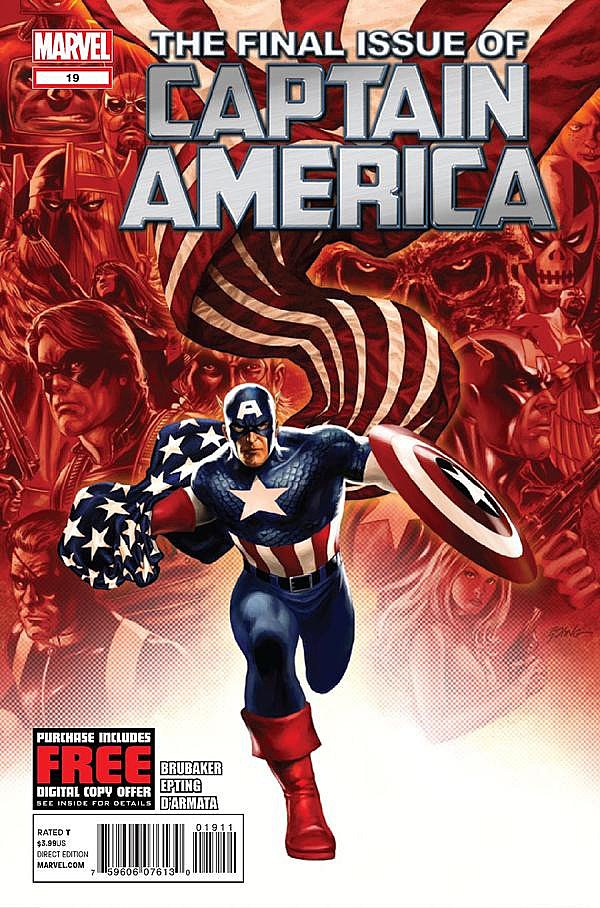 Captain America #19
Captain America #19
Written by Ed Brubaker
Artwork by Steve Epting and Frank D'Armata
Published by Marvel Comics
Available: Comics shops (print) / ComiXology (digital)
Finales are hard to pull off, especially when the audience is primarily made up of longtime fanboys and fangirls. It doesn't matter how good everything leading up to it is, if the swan song sucks, the whole thing leaves a sour taste in everybody's mouths. Lost and Battlestar Galactica, two of the most acclaimed television shows of the last decade, ended with series finales so poorly received you can't even mention either show without somebody visibly holding back their disdain.
Just a couple of months ago, there was something of a finale standoff at Marvel Comics. Within the span of just a a few weeks, several high profile writers stepped away from the long-running and quite popular books they'd been working on for several years. Jonathan Hickman left Fantastic Four and FF after three years; Matt Fraction ended his four-year Invincible Iron Man run with artist Salvador Larroca; and Ed Brubaker finally bid farewell to Captain America, a title he had been writing for eight years.
None of these finales disappointed. Invincible Iron Man and Hickman's books all brought great conclusions to runs that have been described as definitive in the modern age. They left no plot line dangling and made complete statements about the themes which drove each title. But although they were all very impressive, I think Captain America's was ultimately the most satisfying and emotional.
Re-teaming with artist Steve Epting, with whom he relaunched Captain America eight years ago and who went on to pencil and cover about 40 issues over the years, Brubaker provided the final word on his vision of Captain America. Years of the character's history were covered and re-examined while the symbolic power of the hero and the significance of his adventures were reiterated, but in a quiet, unassuming, and almost melancholic way that was as affecting as it was surprising.
BEST ENDING - BLOOD-SOAKED CRIME TRAGEDY GROUP
 Scalped
Scalped
Written by Jason Aaron
Artwork by R.M. Guera
Published by Vertigo
Available: Comics shops (print) / ComiXology (digital)
Pride goeth before a fall, according to the old proverb. In which case, the conclusion of Scalped shouldn't be all that much of a surprise. It is, if nothing else, a story about proud, often stubborn characters who use what power they have to shape the world to their liking. And yet when it all came to an end with August's issue #60 (collected in Scalped: Trail's End), the going standard for Vertigo finales (Preacher went to #66, but let's count it), the surprise came not in terms of what happened to these characters but how they ended up losing everything. Aaron and Guera did something that you can only really do in a comic with a predetermined endpoint. They set a landmine issues -- whole volumes -- ago that Scalped's protagonist, Dashiell Bad Horse, stepped on only when he believed his past sins might really be behind him.
That's a theme throughout Scalped, this idea that everyone pays for his or her transgressions eventually. When Jason Aaron was on the War Rocket Ajax podcast with Chris Sims and I a few weeks ago, he talked about how religion has informed virtually everything he has written. With something like Thor: God of Thunder, it's right there in the text. In Scalped, it's more about undercurrents. The only really religious character in the book is Catcher, who has justified his petty jealousies and crimes of passion over the years with his own twisted spiritualism. But the actual events of the book are downright biblical, Old Testament stuff. The hand of a vengeful God punishes the wicked.
But there's another side to that coin, one that the series' final pages communicate with such art and style that it's pretty saddening that Scalped could be one of the last Vertigo titles of its kind. (Vertigo has a hell of a track record wrapping up its various series.) After the wrath comes peace. For Dash, for Chief Red Crow, for poor Carol, whose life was nothing but volatility until she found some sort of purpose in the series' last third. Even for Catcher, to a degree.
The lingering final image of the series, the imposing sign that tells us we're now leaving the Prairie Rose Reservation, looming as a truck zooms away in the background, captures all the bittersweetness that comes with Scalped's end. Yes, these characters have lost their pride. For much of their lives it was the most important thing to them. But now, they can let it go. And wouldn't you know it, that's freeing.
Come back tomorrow for the final list of ComicsAlliance's selections of our favorite comics of 2012. If you missed part one, click here. If you missed part two, click here. If you missed part three, click here.
More From ComicsAlliance








![Aric Is Having A Bad Day In ‘X-O Manowar’ #1 [Preview]](http://townsquare.media/site/622/files/2017/03/XO00.jpg?w=980&q=75)
